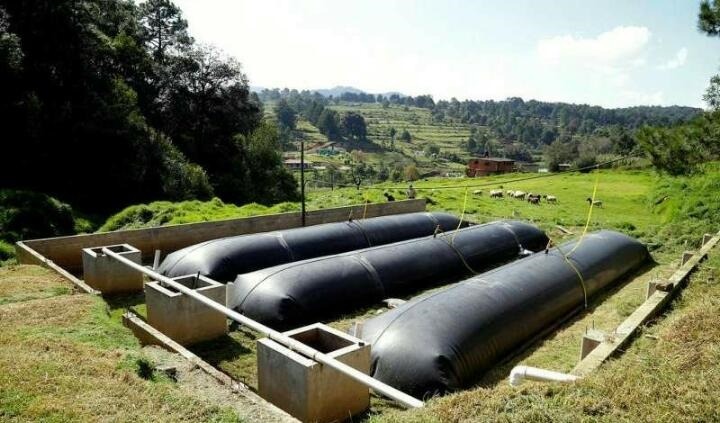Imagine a future where waste isn’t just disposed of but transformed into a valuable resource. Biogas systems are leading the way by converting organic waste into renewable energy, primarily methane-rich biogas. At the heart of these systems lies a crucial element: geomembranes. These innovative barriers are not merely shields but essential guardians of both operational efficiency and environmental integrity.
The impermeable shield of geomembranes
Geomembranes play a pivotal role in biogas systems by forming impermeable barriers. Their primary function is to prevent leaks, ensuring that biogas and potential contaminants remain securely contained within storage units. This safeguard not only preserves the functionality of biogas facilities but also shields local soil and groundwater from any harmful impacts.
Managing odours and enhancing local environments
In areas where communities and agricultural activities converge, controlling odours becomes paramount. Geomembranes contribute significantly to this aspect by effectively containing biogas emissions. By minimising the release of odours, these barriers improve local environmental quality and promote a harmonious coexistence between urban and agricultural landscapes.
Mitigating greenhouse gas emissions
One of the standout environmental benefits of geomembranes is their role in mitigating greenhouse gas emissions. By securely capturing and utilising methane-rich biogas, these barriers prevent potent greenhouse gases from entering the atmosphere. This proactive approach not only supports global climate efforts but also underscores the transformative potential of sustainable waste management practices.
Ensuring sustainable infrastructure
Engineered to withstand harsh environmental conditions such as UV exposure and chemical degradation, geomembranes boast impressive durability. This resilience ensures long-term performance and reduces the need for frequent replacements, thereby minimising material waste and maintenance costs. Beyond operational efficiency, this durability supports sustainable infrastructure development and underscores the economic viability of biogas projects.
Safeguarding natural resources
Beyond their energy benefits, geomembranes act as protective shields, safeguarding soil and water resources from potential biogas by-products. This proactive protection fosters ecosystem health and supports safe agricultural practices, promoting a balanced relationship between human activities and natural environments.
Cost-effective environmental solutions
From a practical standpoint, integrating geomembranes into biogas storage systems offers cost-effective environmental solutions. Their longevity and low maintenance requirements translate into reduced operational costs over time. This economic viability not only enhances the feasibility of biogas projects but also reinforces their pivotal role in sustainable waste management and renewable energy production.
Creating a cleaner, more sustainable future
Geomembranes represent more than just barriers in biogas systems––they embody a transformative approach to sustainable energy solutions. By preventing leaks, managing odours and mitigating greenhouse gas emissions, these innovative shields are reshaping how we harness renewable energy from organic waste.












